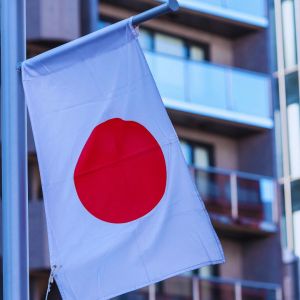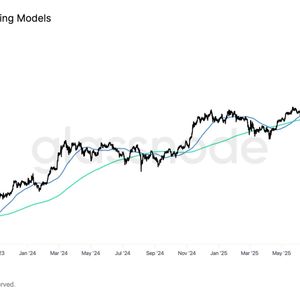Japan’s Finance Minister Satsuki Katayama said on Sunday that the new stimulus package will go beyond ¥17 trillion, meaning way more than $110 billion, not less. She made this statement after meeting with Prime Minister Sanae Takaichi, according to Nikkei, and it clears up confusion over rumors that earlier claimed the government would cap spending at the $110 billion level. Takaichi, who took office last month, has been pushing for an aggressive response to fight rising living costs and invest heavily in new technologies, especially artificial intelligence and semiconductors. The cabinet is scheduled to officially sign off on the full package on November 21. Katayama’s comments now set the tone: it’s going to be a big one. Labor shortage losses hit hard Japan is struggling with a labor crisis that’s bleeding money from the economy. A study by Nikkei and the Japan Research Institute estimates that businesses are missing out on ¥16 trillion ($104.33 billion) every single year because they just don’t have enough people. That number’s quadrupled in five years. It now equals 2.6% of Japan’s GDP, and is nearly as much as the full economic output of Shizuoka prefecture, which brings in about ¥18 trillion a year. The loss number comes from a model created by Shinichi Nishioka, a senior economist at the institute. It measures how much real value companies could’ve added if they had enough workers, and what they actually produced instead. The worst damage is showing up in service industries like hotels and elderly care. These sectors lost ¥13 trillion, which is ¥10 trillion more than five years ago. Most of them haven’t even started investing in automation or tech tools. “Labor shortages diminish the impact of proactive fiscal spending,” Nishioka said. There’s proof of that in places like Kinugawa Park Hotels in Nikko, a city in Tochigi prefecture that’s usually packed with tourists in early October. That’s when Chinese visitors come in droves for their eight‑day holiday. But this year, Makoto Ono, who runs the hotel, said they had to turn people away. “We cannot accommodate any additional guests. We’ve lost between 10% and 20% of bookings for stays with meals,” Makoto said. Out of 130 rooms, they could only use half. Only two of the seven banquet halls were open because staffing had dropped by 40% since before the pandemic. And that’s not even the worst of it. Over in Saitama, the Co-op Deli Consumers’ Co-operative Union stopped all home deliveries for five days in August. It made a tough call, knowing it would cost about 2% in revenue. The alternative, paying for temporary workers, was even worse. And because the summer was one of the hottest on record, the halt hit elderly customers the hardest. Closures rise while investment stalls Japan’s business environment is sliding into what economists are calling shrinking equilibrium; a trap where companies stop investing, can’t grow, and begin to die. In fiscal 2024, Tokyo Shoko Research reported 309 bankruptcies tied to labor shortages. That’s a 60% jump from the year before. Companies can’t hire, can’t pay enough to retain people, and can’t stay afloat. Naoki Kato, who used to run Kato Kensetsu in Shizuoka City, said the company could’ve survived just fine, if they had enough workers. Instead, they posted a loss in the year ending September 2023 and shut down less than 12 months later. Tokyo Shoko Research teamed up with Nikkei to study what’s causing these failures. They looked at sales, workforce decline, and profit drops. Out of 540,000 companies, they found that 2.5% were now in the danger zone, up from 2.2% five years ago. One in four businesses in this group a decade ago has already gone under. Mitsuhiro Harada, who leads the information team at Tokyo Shoko Research, warned that the number could “increase steeply.” Capital spending isn’t safe either. Since fiscal 2019, large companies have failed to follow through on 10% of their planned investments. In fiscal 2024, that total reached ¥1.9 trillion, based on data from the Development Bank of Japan. One high-profile delay comes from TOC, a real estate developer in Shinagawa, Tokyo. The company said in September it won’t knock down its 13‑story building until after 2036, three years late, because labor costs have skyrocketed. That’s keeping them from replacing the old tower with a larger one that could attract bigger tenants. To fight the labor problem , Takaichi in October began reviewing overtime rules under the Work Style Reform Law, which now limits workers to 720 extra hours a year. Loosening the law could increase labor supply, but it might also cut efficiency. Sectors with the worst labor shortages are spending the least on tech. The Fiscal 2024 Business and Investment Survey shows that food, beverage and hotel businesses spend only ¥20,000 per employee on software. Healthcare and welfare groups spend ¥50,000. The industry average? ¥450,000. Takayuki Sueyoshi, chief researcher at Daiwa Institute of Research, said, “Without productivity improvements, labor shortages will worsen and contribute to economic contraction.” Japan has tried to drive growth by pushing demand, but the lack of supply is dragging it back. Even as the new government sticks to an “active fiscal policy,” some analysts say that spending alone isn’t enough. What Japan needs now is better training, smarter tools, and long‑term productivity upgrades — not just more money. Sharpen your strategy with mentorship + daily ideas - 30 days free access to our trading program
 DOGE Price Analysis for November 16
DOGE Price Analysis for November 16









